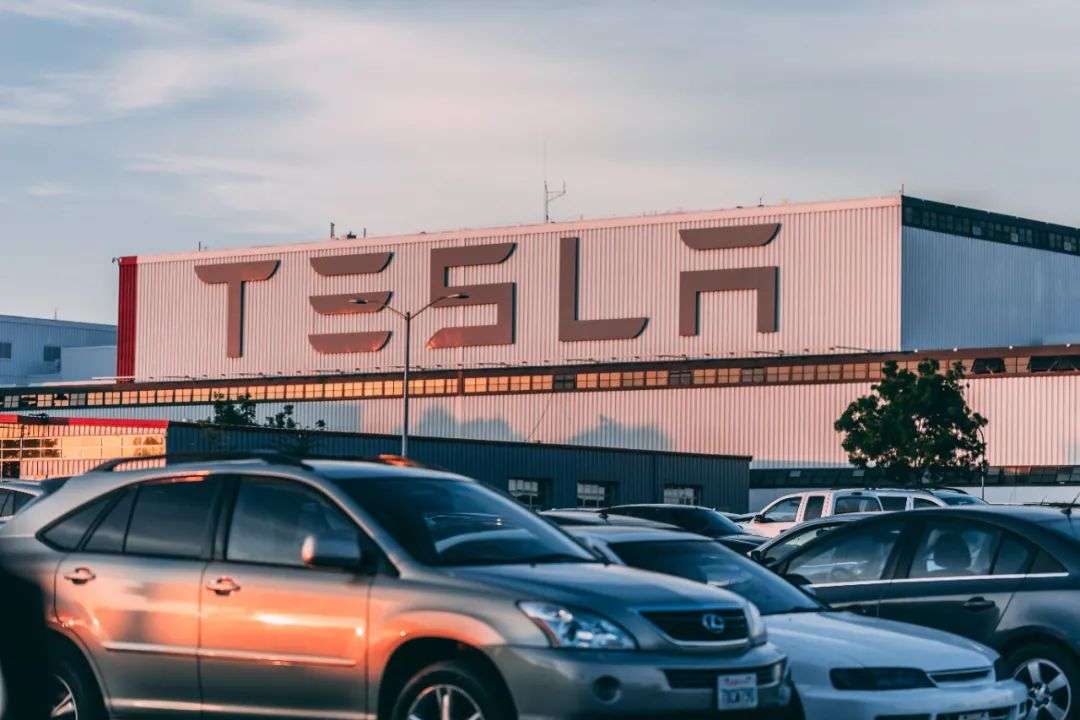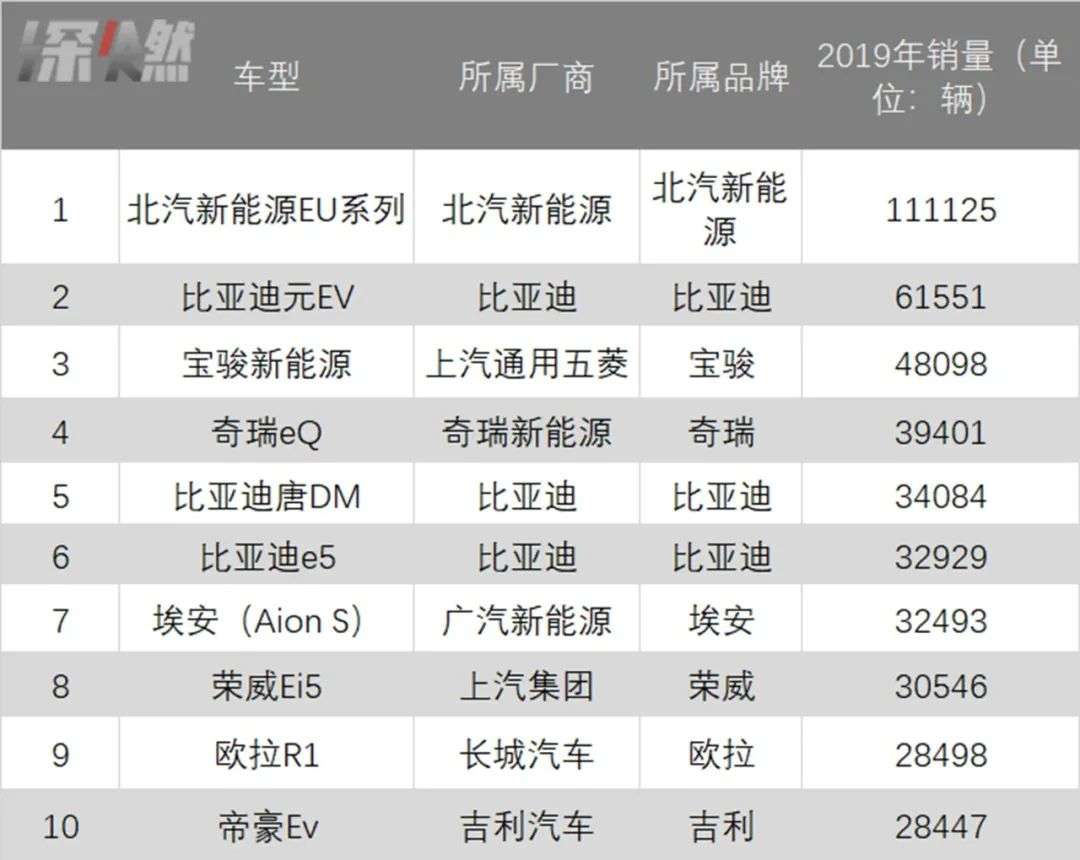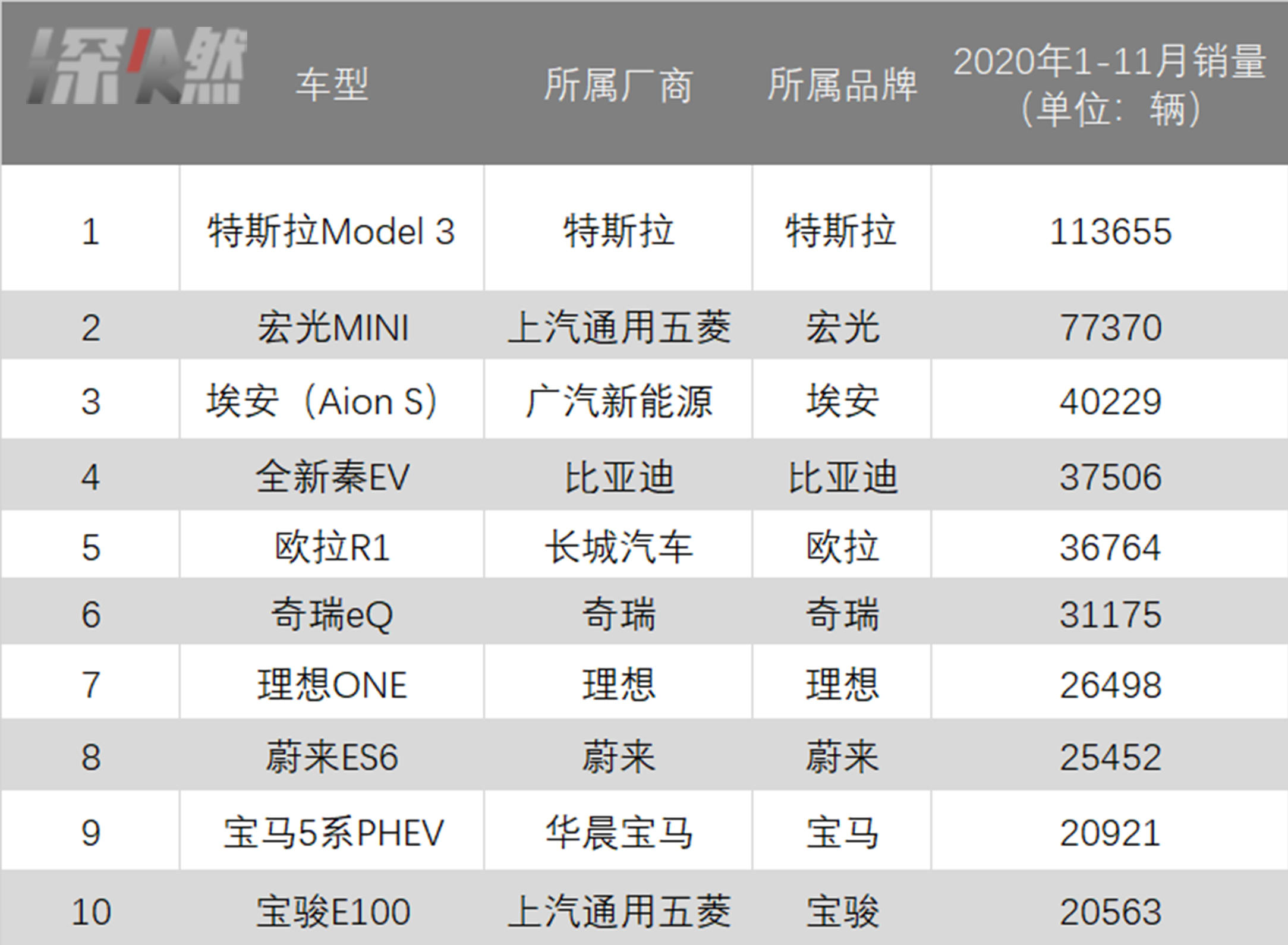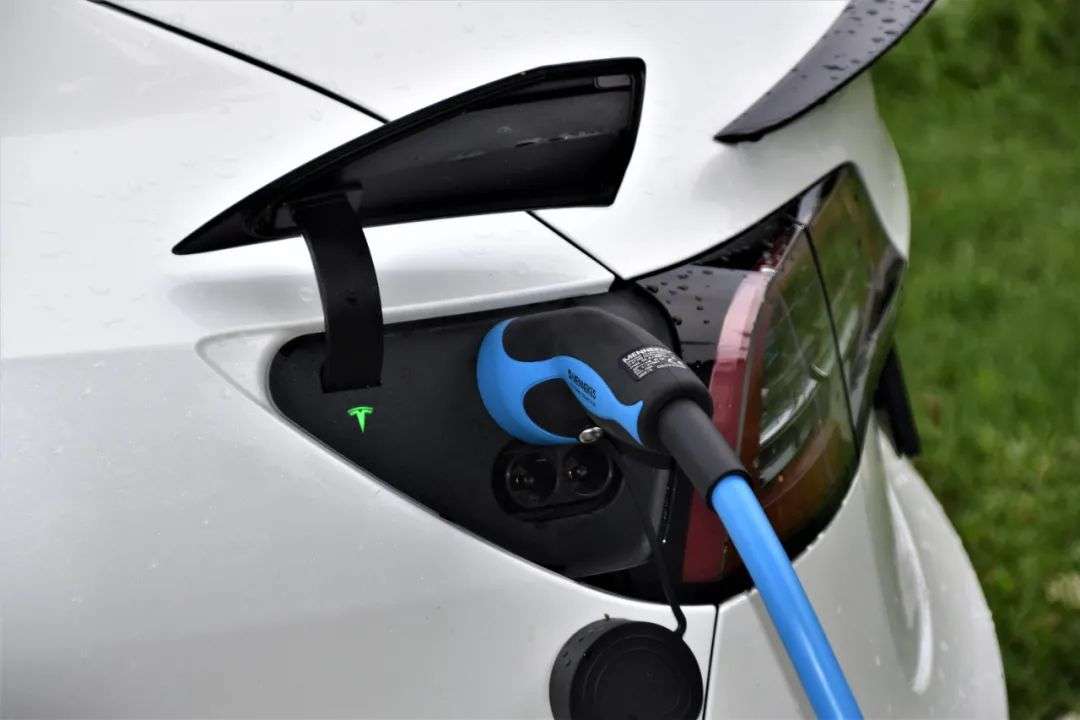Traditional independent brands have become a major contributor to the sales of new energy vehicles.
Editor’s note: This article is from the micro-channel public number “deep burning” (ID: shenrancaijing), Author: Zhou Jifeng, Editor: Kim Yu Fan.
At the beginning of the new year, Tesla, the brother of the newly built car, sent a big gift-another price cut.
According to its official website in China, Model Y will officially go on sale on January 1, 2020. The long-life version and Performance high-performance version start at 339,900 yuan and 369,900 yuan, respectively, which are significantly higher than the previous non-domestic version. The price cut is about 148,100 yuan and 165,100 yuan.
After dropping so much in one breath, it is not difficult to see Tesla’s determination to seize the market through Model Y. This is indeed the case, because SUV models are more popular with consumers in China, the United States and other places than cars.
On the other hand, Tesla is indeed in a hurry. After all, it was in the Chinese market and was hit by an electric car crane owned by a domestic independent brand.
Yes, it is Wuling Hongguang MINI.
This mini-electric car can be said to be a phenomenal explosive model. It has sold nearly 80,000 units within 4 months of its launch. It has beaten the Tesla Model 3 for three consecutive months, and has ranked first in domestic new energy vehicle sales. The throne of one.
The Wall Street Journal published a post on its official Facebook: “Wuling’s micro electric vehicle Hongguang MINI has surpassed Tesla’s Model 3 and has become China’s most The best-selling electric car.”
It is not only Wuling Hongguang. In October 2020, BYD’s overall sales of new energy vehicles also surpassed Tesla, becoming the top two car company in terms of sales of new energy vehicles.
I have to say that in the new energy vehicle market in 2020, Hongguang MINIs are the major contributors to driving sales.
In 2019, the new energy vehicle market ushered in the largest year of subsidy decline in history. In this year, China’s new energy vehicle sales totaled 1.206 million, a year-on-year decrease of 3.5%, and the first negative growth in the past decade. In the first half of 2020, the impact of the epidemic was superimposed, and the sales of new energy passenger vehicles were only 313,000, a year-on-year decrease of 44%.
In the second half of 2020, the new energy vehicle market has ended its “twelve consecutive declines” (that is, monthly sales have fallen for 12 consecutive months compared to the same period last year). The reason behind it is the launch and enthusiasm of Wuling Hongguang MINI and BYD Han, which are driving the sales of the entire market.
For a long time, everyone’s existing brand recognition is that foreign luxury brands>joint venture brands>domestic brands. So what happened in the past six months that made domestic self-owned brands “supported” again?
Who is challenging Tesla
We all know how ruthless Musk’s efforts were. During the epidemic, in order not to delay the delivery schedule, he forced the factory to start. Since February 2020, Tes Laju has been firmly at the top of the national new energy passenger car sales list with a Model 3.
Source / Pexels
But no one would have thought that there will be a dark horse in this market, and there will be more than one.
At the end of July 2020, Shanghai GM-Wuling’s Hongguang MINI has just been on the market for 20 days and its sales exceeded 15,000. In the retail sales ranking bulletin published by the China Travel Association in September 2020, Hongguang MINI directly beat the Tesla Model 3 and topped the list with monthly sales of 14,495 vehicles.
The more ruthless thing is still to come. In the next two months, the sales of Hongguang MINI have not fallen, but have been rising steadily, and have been firmly sitting on the sales crown. In November, the sales of Hongguang MINI reached 33,094, and the highest single-day sales exceeded 2,000, becoming the only model with a monthly sales of more than 30,000 in the domestic new energy market in 2020. In just 4 months, Hongguang has sold nearly 80,000 units.
In addition to Hongguang MINI, with the accelerated recovery of the domestic auto market in the second half of 2020, several models of domestic independent brands have also become popular with outstanding results.
Great Wall Euler R1 (Ola Black Cat) sold 9,463 units in a single month in November, ranking third, up 415% year-on-year. In addition to being affected by the epidemic in February, sales from March to November have been increasing steadily. This is also the best result of the Euler Black Cat in 2020.
Since its launch, BYD Han has been a “explosive” model in the domestic high-end new energy vehicle market. Its sales have risen steadily. In the first month of its listing in July, Han’s sales wereSuch as BAIC, Chery, JAC, etc.”.
It was done early and well. Why can’t the general public name a few new energy models under its own brand? Because of these models, they were not intended to be sold to the general public at the beginning.
In the beginning, traditional car companies made new energy vehicles mostly for the B-end online car-hailing travel market, and there were few models that really let consumers pay. “Many manufacturers have left-handed and right-handed, and sales are more moist.” Li Ming told Shenran.
There are data as supporting evidence. According to the data of China Compulsory Insurance Regulatory Commission in 2019, the ownership of individuals, units and leased vehicles accounted for 52.6%, 18.5%, and 28.9%, respectively. The personal part also includes the case of using it for taxi operation, which means that less than 50% is actually used for private consumption.
In 2019, Xiaopeng Motors Chairman He Xiaopeng even publicly stated on social media that in the first nine months of this year, there were only about 100,000 electric vehicles actually sold to real consumers in China. US sales of 140,000 in the first three quarters were “the same.”
But in 2020, the epidemic suddenly arrived, and cars in the B-end market could no longer be sold. The relevant person in charge of BAIC New Energy once pointed out to the media that the epidemic has reduced the operating rate of taxis and car-hailing-related companies to only 40% to 50%, which has also led to a sharp decline in car purchase demand in the B-end market.
From the sales rankings in 2019 and 2020, it is not difficult to see that it is difficult for independent brands to take their roots.
Comparative data on retail sales of TOP10 new energy passenger vehicle models in 2019 and 2020 (January-November) Source / Citizens Association Drawing / Deep Burn
In 2019, the well-known models on the list, such as BAIC EU series, BYD e5, Roewe Ei5, Emgrand EV, will have their sales collapsed in 2020. The BAIC EU series, which ranked first in sales (110,000) in 2019, will fall out of the top ten in 2020.
The cards have many advantages.
In Zhou Feng’s view, “the new forces of car-making actually admire and respect traditional car companies. From integration to design to some production technologies, traditional car companies are very advantageous.”
Source / Unsplash
“But in terms of the core user thinking and technical software capabilities, (traditional car companies) are actually weak.” Li Ming said that most of the new car-building forces have borrowed from the Internet’s gameplay, in terms of user thinking and software capabilities. The aspect is obviously better.
Especially in terms of user thinking, independent brands are lacking. The traditional car purchase value chain is very complex, from users to sales consultants to dealer management and other levels of feedback, senior management to do strategy and planning, then to research and development, procurement, production, and finally feedback to the sales level. After this series of operations, decision-making often lags behind the user’s ideas.
Zhou Feng has the same view on this. “Many times, it’s not that we can’t do it, but the high-level does not let it. In fact, the most terrible thing is the management structure of the independent brand, which directly affects the quality of the company’s products, the speed of iteration, and strategic choices, and may even affect the company. Life and death.”
The high-end market is even harder to hit. Zhou Feng said that it is difficult to sell petrol trucks with more than 200,000 independent brands. Because of the same car, users may be more willing to buy a joint venture brand. For now, BYD’s new energy brand layout is remarkable, and the industry has been closed. “There is a brand foundation, core technology, and a very good user pool. So when the high-end brand of Han came out, many users were willing to pay.”
Other automakers with independent brands still need time to prove themselves. “The traditional auto market is under increasing pressure. Almost all auto companies are trying to upgrade their brands and launch high-end brands. But in the end, there won’t be too many successful ones, and 3-4 successful ones are not bad.” Li Ming said.
*The title picture comes from Unsplash. At the request of the interviewee, Zhou Feng and Li Ming in the article are pseudonyms.



